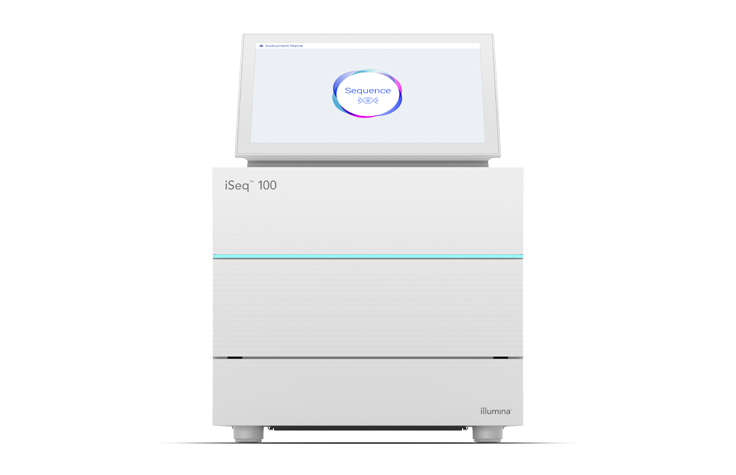Genomic Surveillance

NGS methods to identify and track infectious disease threats
Next-generation sequencing (NGS) has revolutionized genomic surveillance, enabling us to detect and track both known and novel infectious diseases caused by viruses, bacteria, fungi, and parasites. This technology allows us to study pathogens at a molecular level, providing insights into their behavior and evolution in populations around the world.
There are various NGS methods used for genomic surveillance of infectious diseases, each with its own advantages and challenges. The choice of method is dependent on the pathogen(s) of interest, sample type, and data requirements. Illumina offers advanced library preparation, sequencers, and data analysis tools for each method, making it a reliable choice for researchers in this field.
Pathogen surveillance approaches
Genomic surveillance of pathogens with NGS offers exceptional scalability, speed, and accuracy in detecting pathogens, providing the confidence needed to protect public health. Choosing the approach for pathogen detection varies based on the laboratory capabilities and testing requirements, which includes the analysis of a single genome, detection of multiple pathogens, or pathogen discovery.
Single genome
Single-genome sequencing is an optimal method for identifying known targets. Regardless of whether the pathogen originates from an isolated microbial colony on a culture plate or a primary sample, only a single, known genome is being analyzed.
Multi-pathogen
For instances where certain pathogens are suspected to be present, or for surveillance of multiple known pathogens from a primary sample, hybrid capture enrichment solutions are ideal.
Pathogen discovery
This is a useful approach when needing an unbiased analysis of a primary sample. Shotgun DNA/RNA sequencing (metagenomic or metatranscriptomic) analysis of the genetic material present in complex microbial communities can reveal the species-level composition of the community without any prior knowledge.
Compare NGS pathogen surveillance methods
Whole-genome sequencing of isolates
Sequence entire bacterial, viral, and other microbial whole-genomes for generating accurate reference genomes, microbial identification, and other comparative genomic studies. The power of NGS enables multiplexing to identify low-frequency variants and genome rearrangements.
Amplicon sequencing
Detect and fully characterize a known virus. Whole genome sequencing via an amplicon approach is ideal for known viruses with small genomes. This method involves analyzing genomic regions of interest with ultra-deep sequencing of PCR amplicons.
Hybrid capture screening
Detect and characterize coronaviruses, flu viruses, and other pathogenic organisms, as well as associated antimicrobial resistance alleles. These insights can help public health officials monitor outbreaks and optimize infection control strategies. This method captures genomic regions of interest via hybridization to target-specific probes.
Shotgun metagenomics
Comprehensively sequence all organisms in a given sample and identify novel, or emerging pathogens such as Mpox virus. This NGS method can help accelerate outbreak investigations and support development of new laboratory tests.
| Testing Needs | Whole-Genome Sequencing of Isolates | Amplicon | Hybrid Capture | Shotgun Metagenomics |
|---|---|---|---|---|
| Speed & Turnaround Time | ||||
| Scalable & Cost-Effective | ||||
| Culture Free | ||||
| Identify Novel Pathogens | ||||
| Track Transmission | ||||
| Detect Mutations | ||||
| Identify Co-Infections & Complex Disease | ||||
| Detect Antimicrobial Resistance |
Adequately meets laboratory testing needs
Partially meets laboratory testing needs
Genomic surveillance FAQs
Surveillance of infectious disease through wastewater sequencing
Learn how to use wastewater sequencing to monitor SARS-CoV-2 variants and other respiratory viruses in the community.
Read Application NoteFeatured products

COVIDSeq Family
COVIDSeq Assay and COVIDSeq Test are amplicon-based next-generation sequencing (NGS) assays designed to help public health labs identify novel strains of SARS-CoV-2.

iSeq 100
The iSeq 100 system leverages the speed and affordability of complementary metal-oxide-semiconductor (CMOS) technology and the accuracy of sequencing by synthesis (SBS) chemistry.

Illumina Respiratory Virus Enrichment Kit
The Illumina Respiratory Virus Enrichment Kit allows researchers to obtain whole-genome next-generation sequencing (NGS) data for over 40 important respiratory viruses including SARS-CoV-2 and influenza A/B viruses.
Viral Surveillance Panel
Using the Viral Surveillance Panel with Illumina RNA Prep with Enrichment kit allows researchers to obtain whole genome sequencing (WGS) data that can characterize 66 viruses that are of high risk to public health, including SARS-CoV-2, Influenza, Mpox Virus, and Poliovirus, allowing for proactive, broad pathogen surveillance.Infectious disease surveillance applications
Coronavirus surveillance
NGS provides unbiased identification of new coronavirus strains. Illumina offers rapid detection of SARS-CoV-2 coronavirus mutations to meet the demands for efficient sequencing needs.
Tuberculosis surveillance
Learn about Integrative NGS-based solutions for tuberculosis detection, characterization, and analysis.
Wastewater surveillance
Wastewater surveillance is a method to detect, identify and characterize pathogens found in wastewater. This method provides data to help monitor outbreaks and other threats at the community level.
Healthcare-associated infection surveillance
Powered by NGS, labs and clinics can perform genomic Healthcare-associated infections (HAI) related studies at unprecedented speed and scalability using massively parallel workflows.
Antimicrobial resistance
Learn more about how NGS is empowering antimicrobial resistance research in areas of early detection, outbreak responses, and clinical studies.
Frequently Purchased Together
Get help finding the right infectious disease surveillance solution for your needs.
Genomic surveillance customer stories
Fighting drug-resistant tuberculosis in South Africa
Shaheed Vally Omar, the scientific lead at South Africa’s Centre for Tuberculosis - National Institute for Communicable Diseases in Johannesburg, believes that next-generation sequencing can help his country detect and track MDR-TB.
Realizing the potential of pathogen genomics in Africa
Professor Tulio de Oliveira, founding director of CERI and professor at the Universities of Stellenbosch and KwaZulu-Natal, talks about using pathogen genomic surveillance as a public health tool and its future.
Inside a Mumbai lab using genomics for tuberculosis surveillance
Dr. Camilla Rodrigues is fighting tuberculosis at the P. D. Hinduja Hospital & Medical Research Centre, a private, nonprofit hospital in Mumbai, India. Read about her thoughts on the growing threat of drug-resistant tuberculosis and her vision to provide treatment for every patient.
Featured genomic surveillance publications
Mpox virus multiplexed PCR amplicon sequencing (PrimalSeq) V.2.
Read about an amplicon-based sequencing (PrimalSeq) approach for Mpox virus that improved the depth and breadth of genome coverage with low viral concentration specimens compared to metagenomic sequencing.
Phylogenomic characterization and signs of microevolution in the 2022 multi-country outbreak of Mpox virus
Read how scientists used genomic and phylogenomic data to gain insights into the evolutionary trajectory of the 2022 Mpox virus outbreak strain as well as potential mechanisms and targets of human adaptation.
Genome sequencing of sewage detects regionally prevalent SARS-CoV-2 variants
In this publication, scientists describe how they performed epidemiological surveillance through wastewater sequencing and the ability to track specific viral strains.
Genomic surveillance at scale is required to detect newly emerging strains at an early timepoint
See how Illumina scientists developed a model to assess the sampling required to detect emerging SARS-CoV-2 strains when they are less than 1% of all strains in a population.
Discovery of bat coronaviruses through surveillance and probe capture-based NGS
Learn more about a capture-based NGS approach using baits to target coronaviruses. Here, scientists show the feasibility of targeted, cost-effective, large-scale, genome-level surveillance of bat coronaviruses.
Illumina Microbial Amplicon Prep for viral surveillance
Download the application note to see how to get comprehensive coverage across diverse viral genomes for effective surveillance.